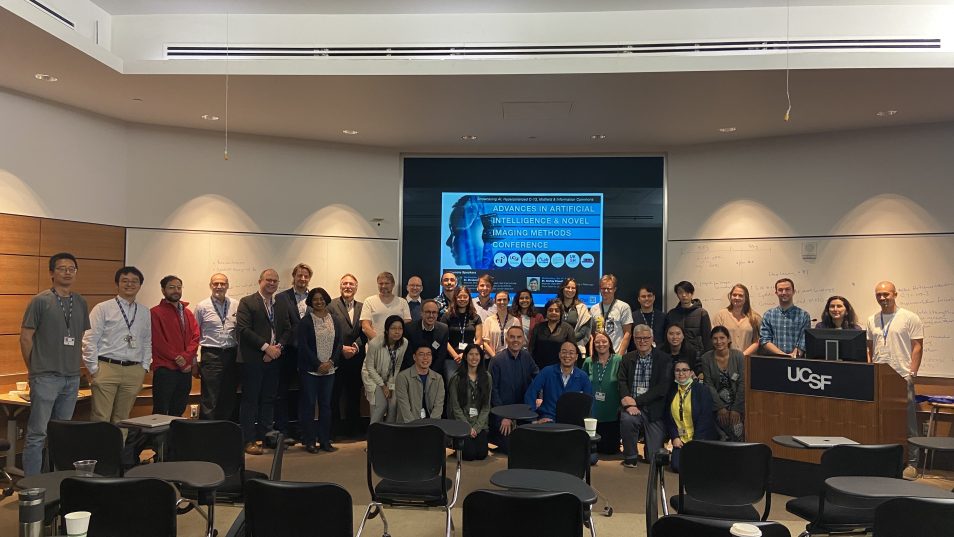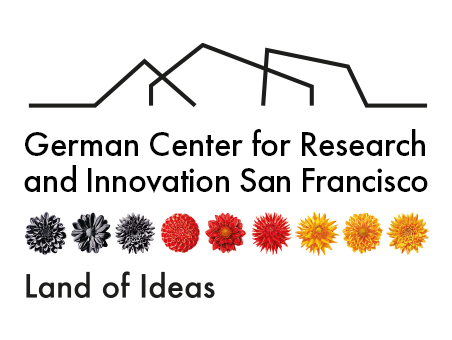UCSF-CAU Advances in Artificial Intelligence & Novel Imaging Methods

On October 5th, DWIH San Francisco was delighted to support an international conference that convened researchers from UCSF Radiology and Biomedical Imaging; Christian-Albrechts-Universität, Kiel, Germany (CAU); and UCSF’s Hyperpolarized MRI Technology Resource Center (HMTRC). Participants heard from imaging experts on the latest advances in artificial intelligence and novel imaging methods.
 The conference, which took place from October 3-5, 2023, featured two keynote speakers on October 4th. Akshay Chaudhari, Assistant Professor in the Department of Radiology at Stanford University, gave a presentation titled: Data Efficient Deep Learning in Radiology: From Vision to Language. He leads the Machine Intelligence in Medical Imaging research group at Stanford and has a primary research interest that lies at the intersection of artificial intelligence and medical imaging. Furthermore, Mirabela Rusu, Assistant Professor in the Integrative Biomedical Imaging Informatics at Stanford University, gave the second keynote on bridging the gap between real time b-mode ultrasound and pathology images using Artificial Intelligence methods for prostate cancer detection. She leads Stanford’s Personalized Integrative Medicine Laboratory (PIMed).
The conference, which took place from October 3-5, 2023, featured two keynote speakers on October 4th. Akshay Chaudhari, Assistant Professor in the Department of Radiology at Stanford University, gave a presentation titled: Data Efficient Deep Learning in Radiology: From Vision to Language. He leads the Machine Intelligence in Medical Imaging research group at Stanford and has a primary research interest that lies at the intersection of artificial intelligence and medical imaging. Furthermore, Mirabela Rusu, Assistant Professor in the Integrative Biomedical Imaging Informatics at Stanford University, gave the second keynote on bridging the gap between real time b-mode ultrasound and pathology images using Artificial Intelligence methods for prostate cancer detection. She leads Stanford’s Personalized Integrative Medicine Laboratory (PIMed).
The event also featured panels on the following topics:
- AI Using Radiographs/CT
- Hyperpolarized C13
- Advances in AI, Metabolic Imaging and Translation to the Clinic
- Information Commons Showcase
- Natural Language Processing
 DWIH San Francisco supported four researchers from Professor Claus-C. Glüer‘s lab who are working on an AI Exchange project. Glüer is Professor of Medical Physics at the Christian-Albrechts University in Kiel and his project is a joint partnership between the Intelligent Imaging Lab at the Christian-Albrechts Universität zu Kiel and the Center for Intelligent Imaging at UCSF that uses federated learning technology. The AI networks at both locations were initially trained independently at each site as they gained practical experience. These were then sent to a central server at Kiel University and merged, which resulted in a joint new network that is more experienced than the individual ones. This was finally sent back again and again to the local training sites for optimal training. Researchers gave presentations at the conference on the differences between homomorphic vs. differential privacy in AI models, data security, how to improve the federated learning, as well as potential sources to acquire training data from different cross-sections of society.
DWIH San Francisco supported four researchers from Professor Claus-C. Glüer‘s lab who are working on an AI Exchange project. Glüer is Professor of Medical Physics at the Christian-Albrechts University in Kiel and his project is a joint partnership between the Intelligent Imaging Lab at the Christian-Albrechts Universität zu Kiel and the Center for Intelligent Imaging at UCSF that uses federated learning technology. The AI networks at both locations were initially trained independently at each site as they gained practical experience. These were then sent to a central server at Kiel University and merged, which resulted in a joint new network that is more experienced than the individual ones. This was finally sent back again and again to the local training sites for optimal training. Researchers gave presentations at the conference on the differences between homomorphic vs. differential privacy in AI models, data security, how to improve the federated learning, as well as potential sources to acquire training data from different cross-sections of society.
Participants also strategized future funded exchanges, projects and grant opportunities that expand the project’s reach.
